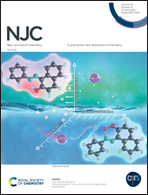Insights into the 1-ethyl-3-(3-dimethylaminopropyl) carbodiimide (EDC)-induced gelation of fully carboxylated collagen and the fabrication of hydrogels with enhanced mechanical properties
Abstract
Collagen-based hydrogels have been widely used as biomaterials in recent years owing to their excellent biological properties. However, their poor mechanical properties due to the poor solubility of native collagen under physiological conditions limit their application. In this case, although the solubility of collagen can be improved by succinylation, the gelation of succinylated collagen (SCol) is another challenge. Herein, 1-ethyl-3-(3-dimethylaminopropyl) carbodiimide (EDC) was used to induce the gelation of SCol based on the formation of anhydride bonds between the carboxyl groups of SCol. The concentration of the SCol system was increased to 30.0 mg mL−1, which was much higher than that of the collagen system (10 mg mL−1). Correspondingly, the elastic modulus (G′) of SCol hydrogels was improved to 310 Pa, which was higher than that of the collagen hydrogel (20 Pa). Notably, the triple helix of SCol is crucial for its EDC-induced gelation. The transmittance, porosity, and water content of the SCol hydrogel were studied. Additionally, the cytocompatibility of the SCol hydrogel was explored using CCK8 colorimetry and confocal microscopy. This study provides a novel strategy for improving the mechanical properties of hydrogels by increasing collagen concentration, which is helpful for the design and application of collagen-based materials.



 Please wait while we load your content...
Please wait while we load your content...